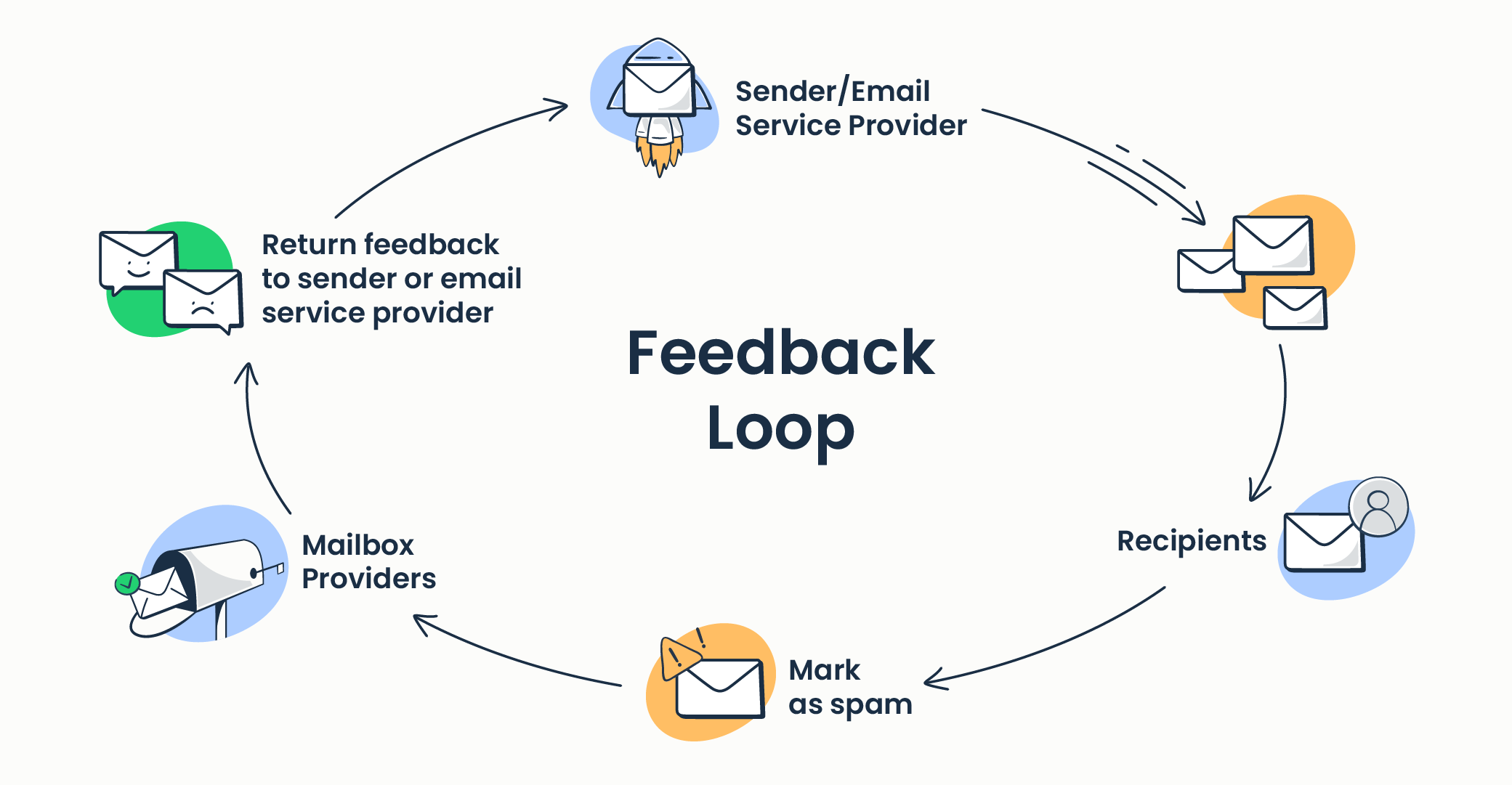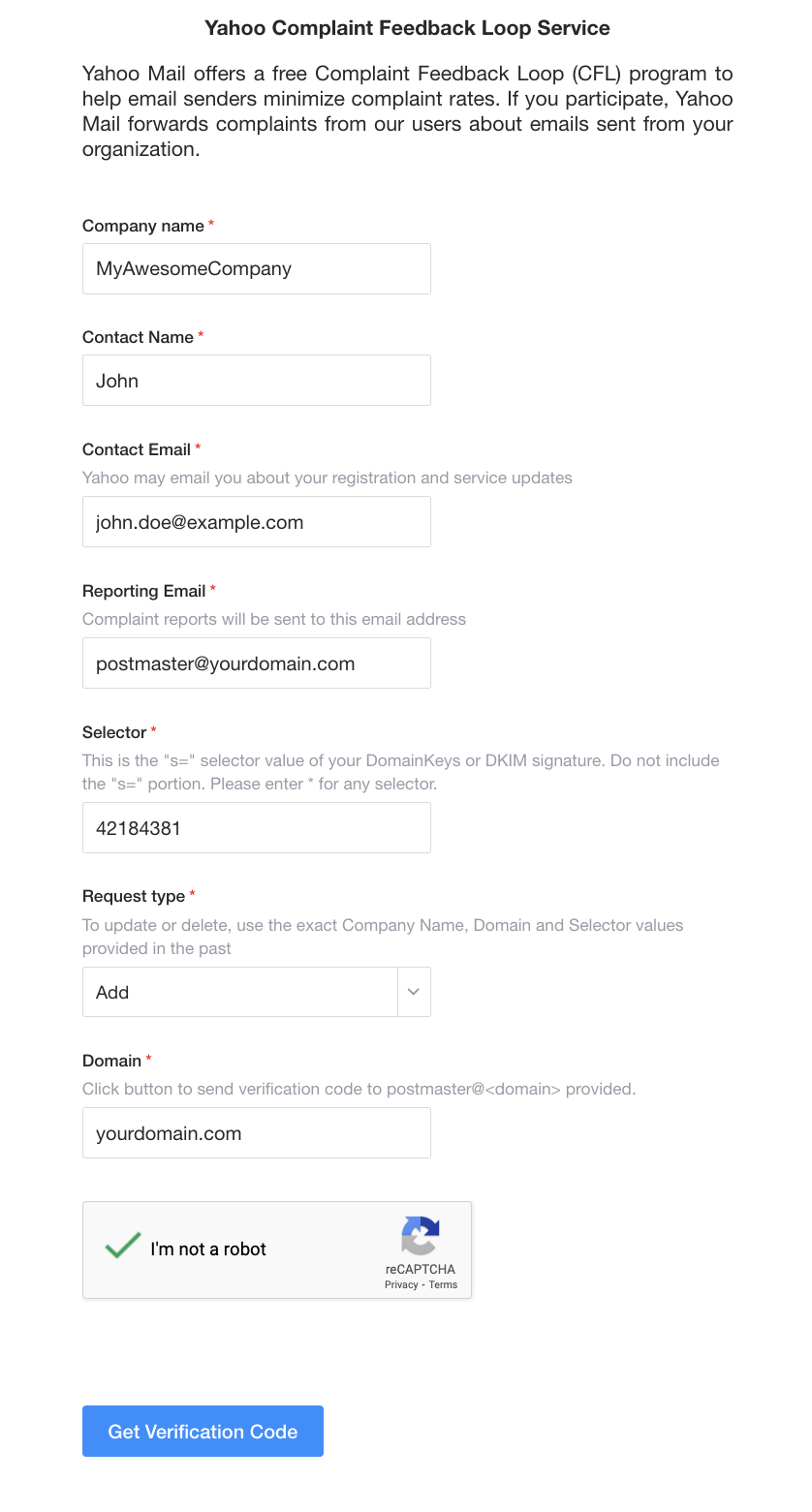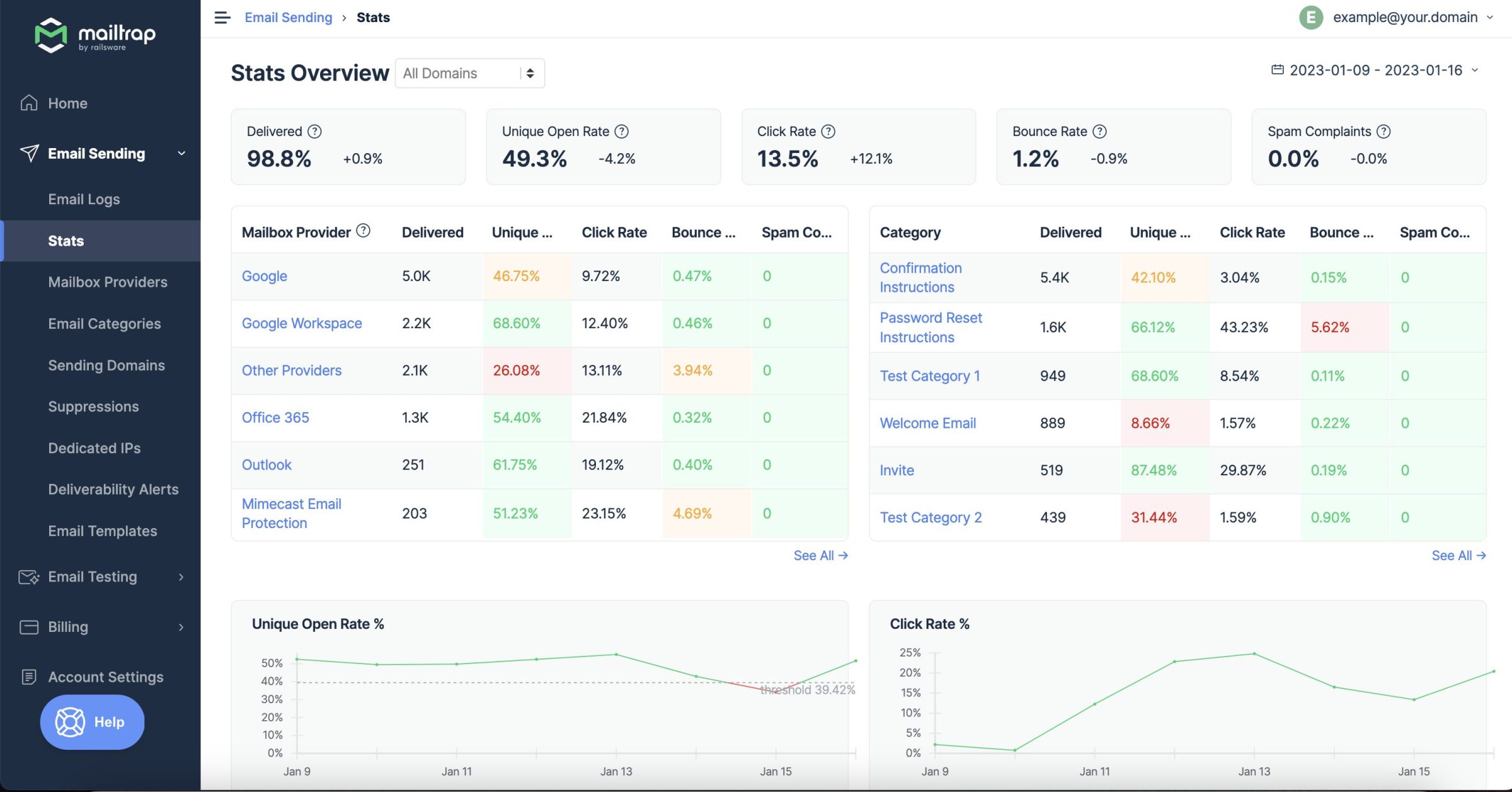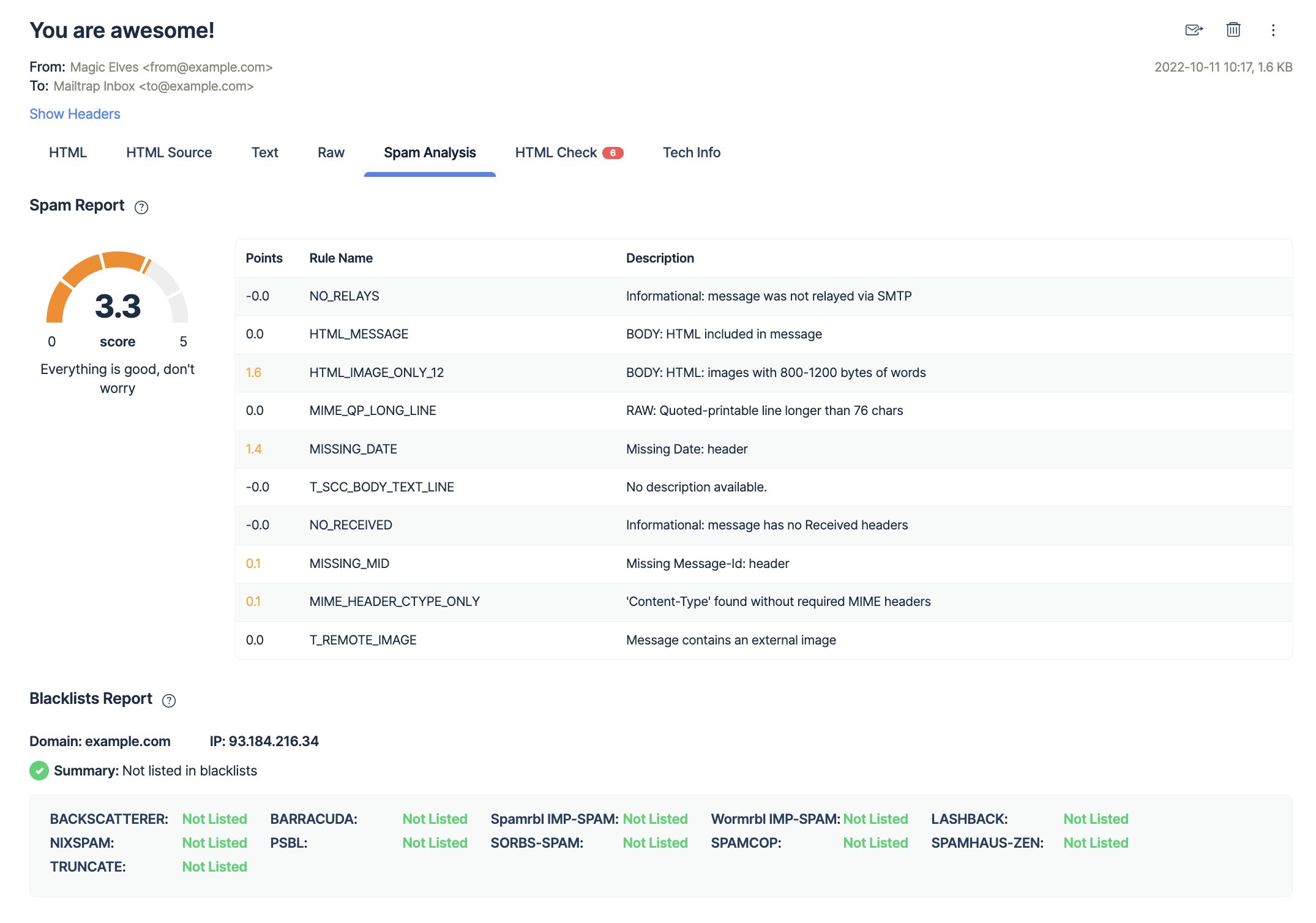In our blog, we talk extensively about email deliverability. We’ve discussed sender reputation, spam filters, shared and dedicated IP addresses – basically every factor that may be in the way of your emails making it into the inboxes.
Today, we’ll be talking about email feedback loops – the very mechanism that informs senders about spam complaints. We’ll discover how it works, why it’s so important, and how it’s incorporated into Mailtrap’s infrastructure.
What is an email feedback loop or FBL?
An email feedback loop or FBL is a service offered by most mailbox providers. It allows senders to be notified when their emails are marked as spam by recipients.
If the bulk sender or an email service provider (ESP) is signed up for the FBL, mailbox providers generate feedback reports whenever they receive complaints. Those reports are then sent to the senders/ESPs. The data can include each email address that marked the emails as spam or be an aggregate of all the complaints. It depends on the mailbox provider itself.

For example, Gmail won’t notify you about the email address that marked your email as spam, but you’ll get aggregate information about the particular campaign, product, or region.
Contrary to Gmail, Yahoo! (and most other providers) forwards user complaints in the ARF (Abuse Reporting Format) which includes a notification about the abuse, the original message body, as well as the from and to addresses.
Note: to qualify for FBL, you must be a high-volume sender.
Why is it important to have an email feedback loop?
An email feedback loop can help you improve your deliverability. With regular feedback reports, you can remove ‘complaining’ subscribers from your mailing list and avoid future spam complaints. This can also be done automatically if you’re using an ESP to send your emails.
Even if you’re not receiving data about particular email addresses, you can still draw conclusions by examining spam complaint rates in the specific campaign, region, demographics, or email types.
Transactional emails may also result in spam complaints if the recipients don’t want to receive any of your messages and don’t find another way to unsubscribe. Frequent spam complaints will compromise your domain and IP reputation, making it harder for you to reach your customers with important transactional messages. So, FBLs are important even if you don’t run email marketing campaigns.
Email FBL requirements
The specifics of email FBL requirements can differ significantly between mailbox providers. However, they all require you to satisfy the following criteria:
- Be the owner of the domain/IP – at the very least, you should have admin rights to the domain to register for FBL. This is a security measure to ensure sensitive information isn’t leaked to third parties;
- Have a separate email address to receive reports – typically, these should be abuse@ or postmaster@ addresses;
- Correctly configured DNS and rDNS records – most mailbox providers require you to have SPF or DKIM authentication methods for your sending domain. They also ask for configured PTR records (rDNS). For example, Gmail requires you to have your IP published in SPF records in your DNS. The IP should have PTR records that lead to a working domain that, preferably, is signed with a DKIM signature. At the same time, Yahoo! no longer supports IP-based reporting;
- Good sender reputation – you can learn how to check and maintain a good sender reputation here.
How to apply for a feedback loop?
Once you satisfy the requirements above, you can apply for a feedback loop. In most cases, you’ll need to submit an application in which you’ll indicate your postmaster@ or abuse@ email address, along with your company name and other credentials. Let’s now see what that process would look like for Yahoo! and Gmail.
How to apply for Yahoo! feedback loop
To sign up for Yahoo! feedback loop, you’ll need to complete the Complaint Feedback Loop (CFL) application form. You’ll need to provide basic information about you and your company. You’ll also need to include your DKIM ‘s=’ selector since Yahoo! supports feedback reporting only for DKIM-authenticated domains.
This is what a completed form would look like:

Once you submit the form, you’ll get a verification code in your email. You’ll also have to include that in your application.
How to apply for Gmail feedback loop
Things are a bit different when it comes to signing up for the Gmail feedback loop. Google doesn’t offer the typical ARF reports. Instead of sending data to a dedicated email address, they reveal information about unusual spam rates in their Postmaster Tools FBL dashboard.
To sign up for Gmail’s FBL, you’ll need to add a new header called Feedback-ID, which includes SenderID and up to three identifiers. The header has the following format:
Feedback-ID: a:b:c:SenderId
A, b, and c are optional identifiers that you can use to narrow down the received information. You can specify campaigns, customer segments, or email types. For example, you’ll be able to get data about the newsletter campaign that you sent to your e-commerce customers in the US. SenderID is the mandatory unique identifier that should be between 5 to 15 characters. You should keep it consistent across various streams.
Keep in mind that the data you receive will be an aggregate of each identifier. Let’s spiral back to the previous example. You’ll receive spam rates for the newsletter, e-commerce customers, and the US separately. To learn how to interpret Gmail’s FBL data, refer to their documentation.
Mailbox providers that offer email feedback loops
As mentioned above, most mailbox providers offer email feedback loops including:
- Gmail – through Feedback-ID header
- Yahoo! and AOL – through ARF emails
- Hotmail and Outlook – through ARF, attachment, or original message
- Mail.ru – through ARF emails using Validity’s universal FBL service
- BlueTie – through ARF emails using Validity’s universal FBL service
- FastMail – through ARF emails using Validity’s universal FBL service
- Laposte.net – through ARF emails using Validity’s universal FBL service
- Synacor – through ARF emails using Validity’s universal FBL service
- Cox – through ARF emails using Validity’s universal FBL service
- Comcast – through ARF emails using Validity’s universal FBL service
- OpenSRS – through ARF emails using Validity’s universal FBL service
How Mailtrap leverages email feedback loops
If you’re a high-volume sender, you can’t possibly sign up for all the email feedback loops we’ve listed above (and others we didn’t include). And even if you do, it would be nearly impossible to process all the received data manually. Plus, you’ll also need an ESP to reduce spam complaints and improve email deliverability. That’s where Mailtrap comes into play.
Mailtrap is an Email Delivery Platform for businesses and individuals. It consists of Email Sending and Email Testing.
Email Sending is an email infrastructure with high deliverability rates by design. It has both Email API and SMTP service for quick and easy integration. Email Sending has unique monitoring capabilities with actionable analytics. It includes drill-down reports for mailbox providers and category reports. With these, you get precise stats about click, open, and bounce rates.

To ensure high deliverability rates, Mailtrap Email Sending is integrated with all major feedback loops. The spam complaints are added to the account-specific lists and count toward your overall spam complaints.
Email Sending also offers suppression management. The email addresses that mark your emails as spam are automatically put into suppression lists. The same goes for soft and hard bounces and unsubscribes.
Before you start sending, you can also analyze your emails for spam using Email Testing – it’s a safe environment to inspect and debug your emails in staging. With its help, you can easily access your spam report in the Spam Analysis tab. The spam score is based on the most popular spam filter – Apache SpamAssassin score.

This means that you can reduce spam complaints even before you reach your recipients. And if they still mark your emails as spam, you’ll be notified about it immediately with Email Sending’s actionable analytics and deliverability alerts. And no, you won’t have to fill out email feedback loop sign-up forms manually.
Thanks for reading!



